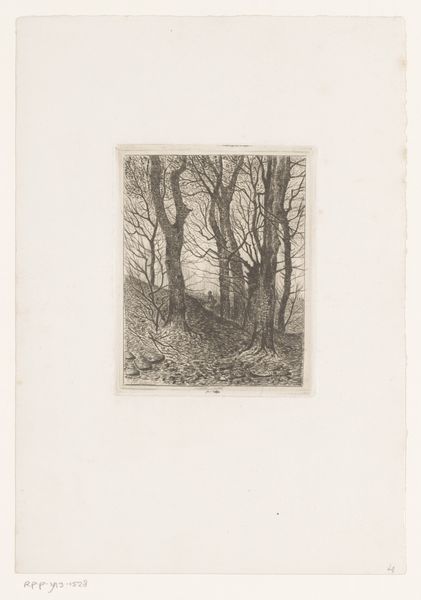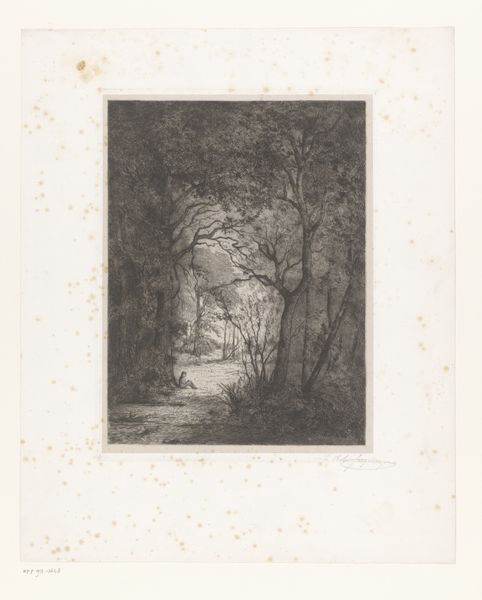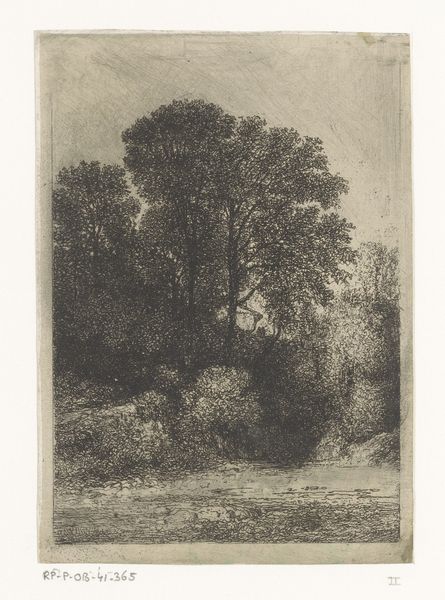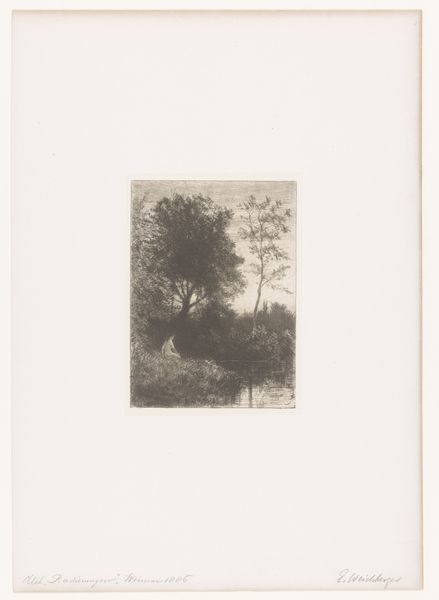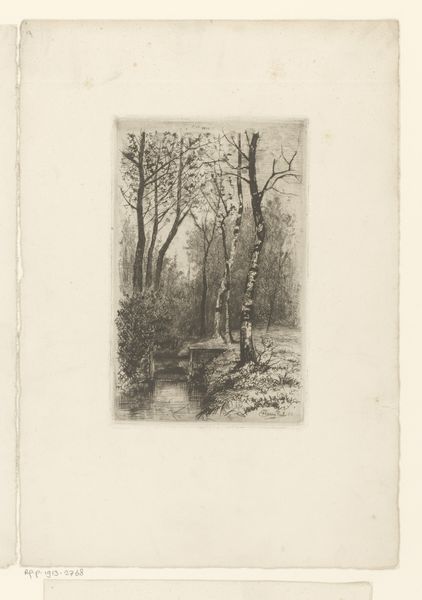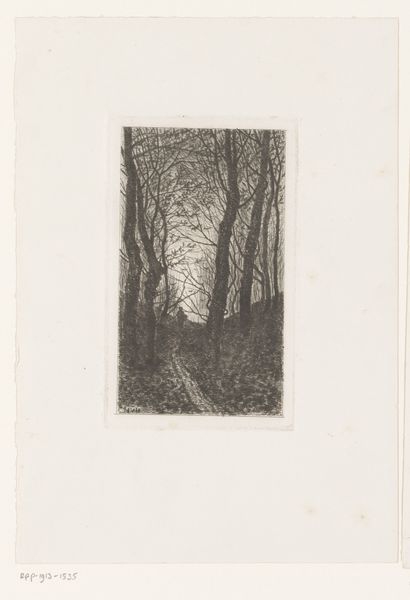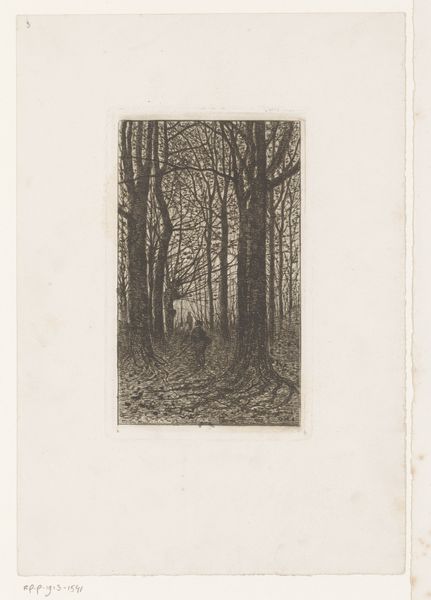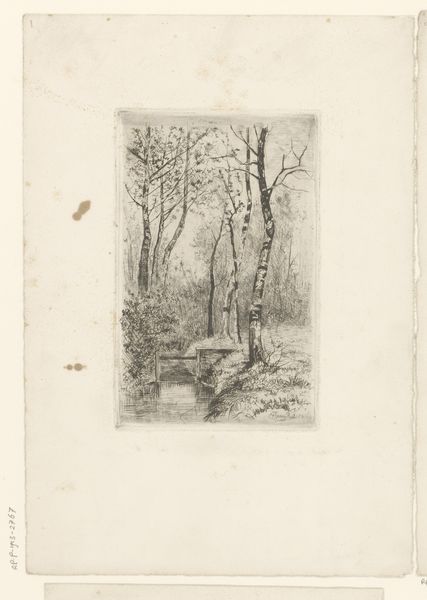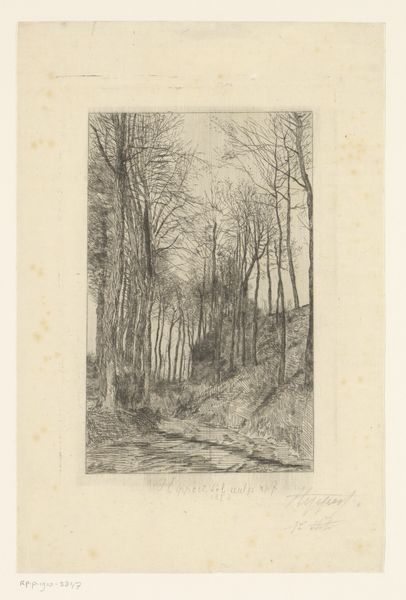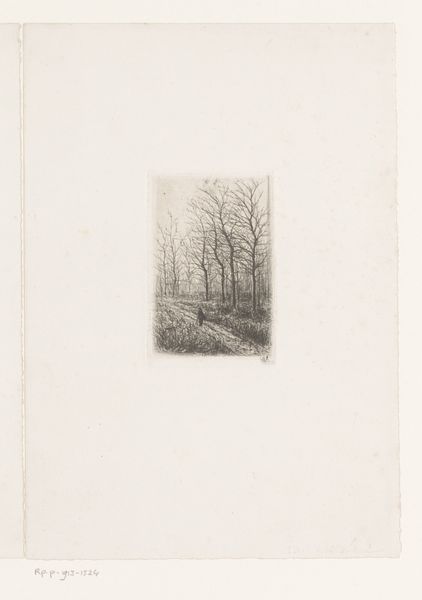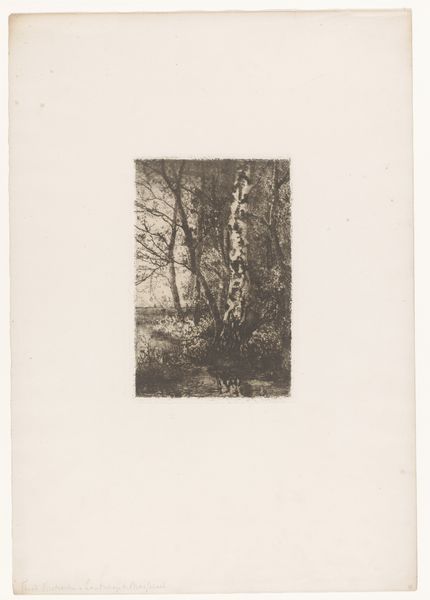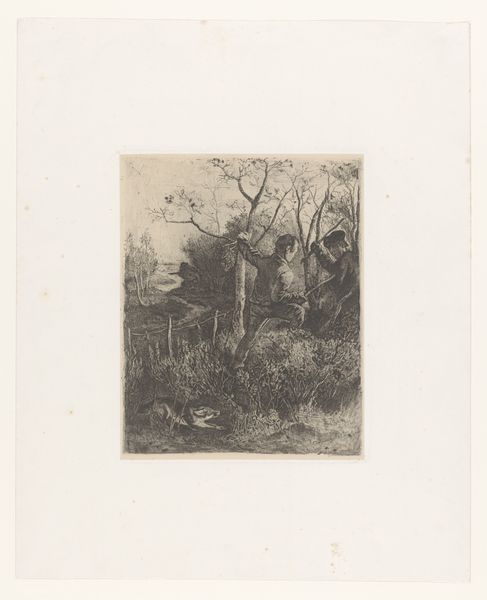
Dimensions: height 150 mm, width 88 mm
Copyright: Rijks Museum: Open Domain
Philip Zilcken made this etching of trees and houses by the water using an intaglio printmaking process. Here, a metal plate, likely copper or zinc, would have been coated with a waxy, acid-resistant substance. Zilcken then scratched his design into this coating, exposing the metal beneath. The plate was then immersed in acid, which bit into the exposed lines, creating grooves. Ink was forced into these grooves, the surface wiped clean, and the image transferred to paper under high pressure. Look at the intricate network of lines that define the bare trees and the reflections in the water. The density and depth of these etched lines give the image its tonal range. This was a labor-intensive process, demanding both physical skill and artistic vision. The resulting prints, like this one, were relatively affordable and could be widely distributed, making art accessible to a broader public. Considering the materials, the making, and the context allows us to understand the full meaning of the work, challenging traditional distinctions between fine art and craft.
Comments
No comments
Be the first to comment and join the conversation on the ultimate creative platform.
